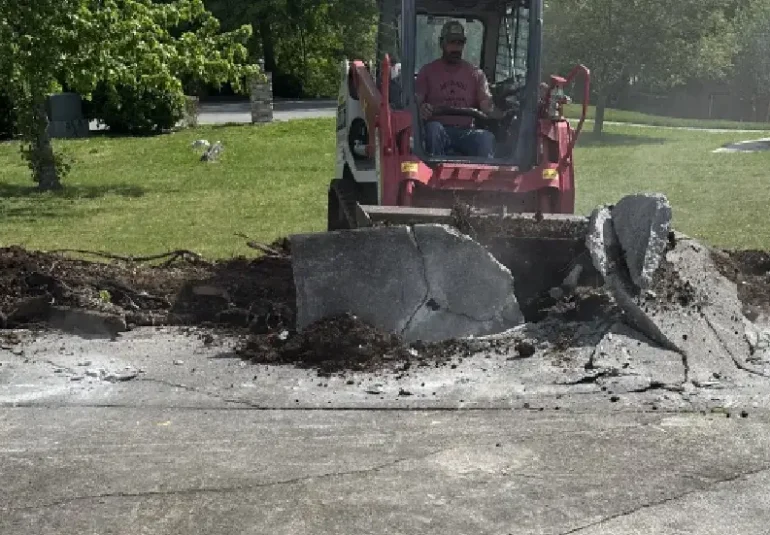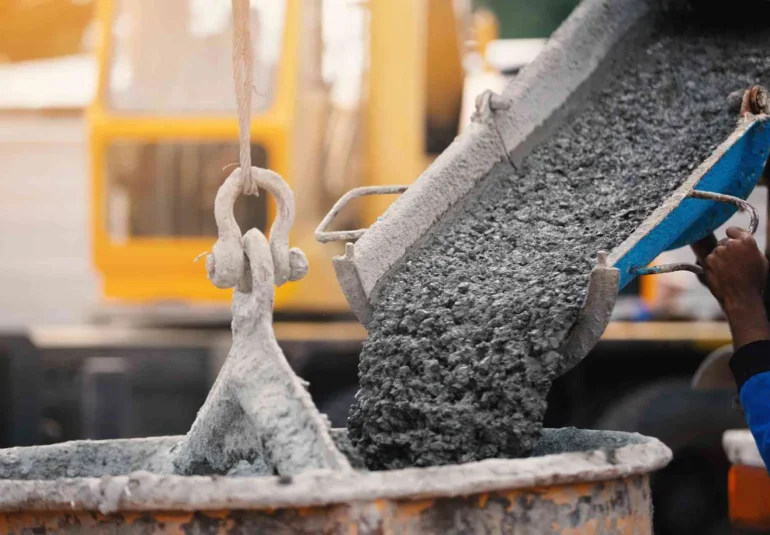
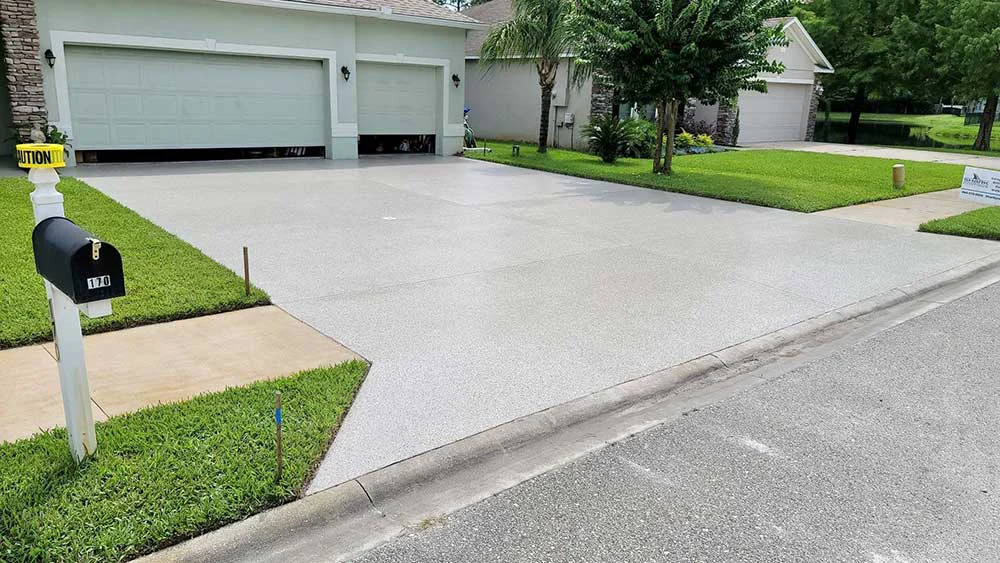
Table of Contents
Expert Insights: Preserving Your Concrete with Concrete Guys Knox
Introduction
Have you ever strolled through the bustling streets of your city, taking a moment to appreciate the concrete that paves your path? This unassuming material is the unsung hero of our urban existence, quietly bearing the weight of our daily lives. Yet, it’s often only noticed when it begins to show signs of neglect. In a place like Knoxville, where the weather can swing from sun-drenched summers to frost-kissed winters, taking care of your concrete goes beyond mere aesthetics. It’s about ensuring its longevity and maintaining a safe environment for everyone who treads upon it.
At Concrete Guys Knox, we understand that concrete is not just a material; it’s a vital part of the city’s infrastructure. It’s the foundation upon which our homes, businesses, and public spaces are built. That’s why we believe in a proactive approach to concrete care, one that’s specifically tailored to meet the challenges posed by Knoxville’s unique climate.
Knoxville’s weather can be capricious, with its humid summers creating the perfect breeding ground for mold and mildew, and its cold winters causing freeze-thaw cycles that can wreak havoc on unprepared surfaces. These conditions demand a specialized approach to concrete maintenance, one that not only addresses the immediate aesthetic concerns but also fortifies the concrete against future damage.
In this guide, we’ll explore the various facets of concrete care, from routine cleaning to more complex issues like crack repair and weatherproofing. Whether you’re a homeowner looking to spruce up your driveway, a business owner wanting to maintain your storefront, or simply someone interested in the longevity of your city’s infrastructure, this guide will provide you with the insights and tips you need to keep your concrete in top-notch condition.
Join us as we delve into the world of concrete care with Concrete Guys Knox, where we combine expert knowledge with practical advice to help you preserve the integrity and beauty of your concrete surfaces. Let’s embark on this journey together, ensuring that the concrete under our feet remains not just a functional necessity, but a testament to our commitment to quality and safety in the heart of Knoxville.
The Essence of Concrete
Composition and Intricacies
Concrete, that stalwart composite of cement, water, and various aggregates, is a marvel of modern construction. Its formidable strength has upheld countless structures across the globe, making it a cornerstone of architectural achievement. Yet, for all its robustness, concrete possesses a porous character, a trait that, while contributing to its versatility, also renders it susceptible to environmental wear and tear. This porousness, akin to a sponge, can absorb water, chemicals, and other substances, which over time can lead to degradation.
Understanding the intricate composition of concrete is crucial. The blend of cement, a binder, with water creates a paste that envelops and binds the aggregates – usually sand and gravel or crushed stone. This mixture, when cured, forms a stone-like substance known for its durability and strength. However, the very nature of this composition means that concrete is not impervious to the relentless march of time and the relentless assault of the elements.
Weather’s Impact in Knoxville
In Knoxville, the concrete endures a veritable ballet of climatic conditions. The humid summers bring with them an abundance of moisture, saturating the air and, by extension, the concrete. This moisture can seep into the pores of the concrete, and when the temperature drops, it expands as it freezes, leading to potential cracking and structural compromise.
Conversely, the chilly winters present their own challenges. The freeze-thaw cycle is particularly detrimental to concrete surfaces. As water within the concrete freezes, it expands, exerting internal pressure and leading to micro-cracks. Over time, these micro-cracks can evolve into visible damage, compromising both the aesthetic and structural integrity of the concrete.
Routine Upkeep
Effective Cleaning Methods
To mitigate these risks, routine maintenance is essential. Regular cleaning plays a pivotal role in preserving the longevity and appearance of concrete surfaces. A simple yet effective cleaning regimen involves the use of mild detergents mixed with water. This solution can gently cleanse the surface of everyday dirt and grime without inflicting harm on the concrete.
For more stubborn stains, such as oil or grease, specialized concrete cleaners are recommended. These cleaners are formulated to tackle tougher stains without damaging the concrete. However, it’s important to steer clear of harsh chemicals and acidic cleaners. Such substances can etch the surface of the concrete, leading to pitting and a gradual breakdown of the material.
In essence, the care of concrete in Knoxville is a delicate balance – understanding its composition, respecting its vulnerabilities, and responding with appropriate maintenance techniques. By doing so, the longevity and resilience of concrete can be greatly enhanced, ensuring that it continues to serve as a reliable foundation for urban life.
Combatting Mold and Mildew
In the verdant landscape of Knoxville, the air often carries a significant amount of moisture, creating an environment where mold and mildew can thrive, especially on concrete surfaces. These fungal foes not only mar the appearance of concrete with their unsightly stains but can also lead to more significant structural issues if left unchecked.
Strategies for Prevention and Removal of Mold and Mildew
Regular Cleaning
A diligent cleaning routine is paramount in preventing the onset of mold and mildew on concrete surfaces. Regularly sweeping and washing the concrete can keep these fungal invaders at bay. For effective cleaning, a solution of mild detergent and water is often sufficient. This gentle approach can lift away dirt and grime, reducing the conditions that mold and mildew thrive in.
For more stubborn mold and mildew, a solution containing mild bleach can be employed. This stronger approach can target and eliminate persistent fungal growths. However, caution is advised when using bleach. It should be diluted appropriately and used sparingly, as overuse can lead to discoloration of the concrete, altering its natural appearance. It’s also important to wear protective gear, like gloves and a mask, to safeguard against any harmful effects of the bleach.
Proper Drainage
Effective water management is critical in preventing mold and mildew. Concrete surfaces should be designed or modified to ensure that water drains away efficiently. This involves assessing the surrounding landscape and making necessary adjustments. For instance, sloping the ground away from concrete areas can prevent water from pooling around them. In areas where natural slope is insufficient, installing drainage systems like French drains can be an effective solution.
Additionally, ensuring that gutters and downspouts are properly installed and maintained can significantly reduce water accumulation near concrete surfaces. These systems should be regularly cleaned and checked for blockages to ensure they are functioning optimally. Redirecting downspouts away from concrete areas can also help in keeping these areas dry.
Ventilation and Sunlight
Mold and mildew thrive in damp, shaded environments. Therefore, increasing ventilation and exposure to sunlight can be highly effective in deterring their growth. For indoor concrete surfaces, such as those in basements or garages, improving air circulation is key. This can be achieved through the use of fans or dehumidifiers, which help to reduce moisture levels in the air.
For outdoor concrete surfaces, trimming back overhanging trees or shrubs can increase sunlight exposure, naturally drying out the area and making it less conducive to mold and mildew growth. Additionally, arranging outdoor furniture or planters in a way that does not block sunlight can also help in keeping the concrete dry.
In summary, the prevention and removal of mold and mildew from concrete surfaces involve a combination of regular cleaning, effective water drainage, and improved ventilation and sunlight exposure. By implementing these strategies, you can maintain the aesthetic and structural integrity of your concrete, ensuring it remains a durable and attractive feature of your property.
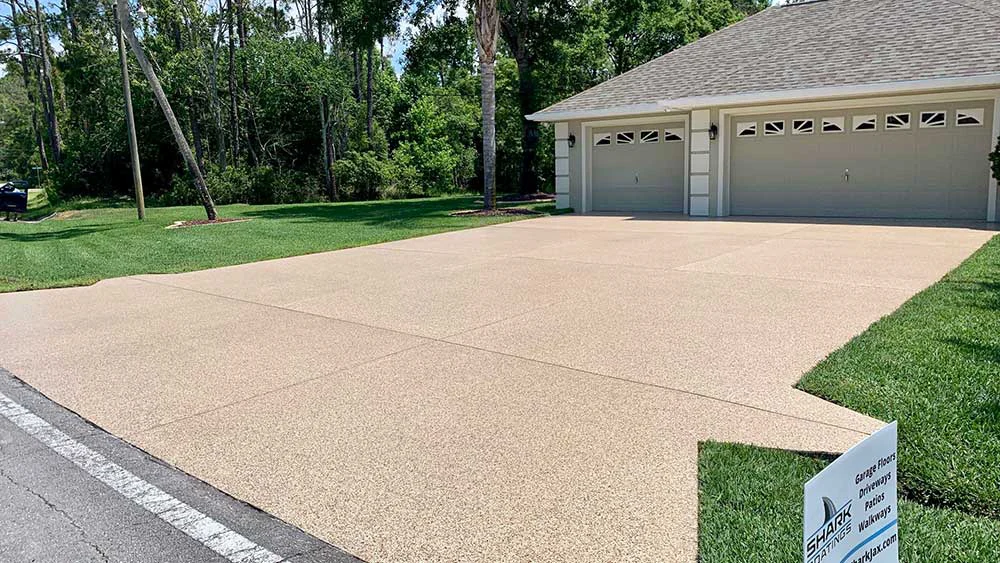
Addressing Cracks and Damage
Crack Classification in Concrete
Concrete is renowned for its strength and durability, but it is not impervious to cracking. These cracks can manifest in various forms, each requiring a different approach for repair and prevention. Understanding the type of crack is crucial in determining the most effective treatment method.
Hairline Cracks
Hairline cracks are the most common type of cracks in concrete. They are fine, superficial cracks that often appear within the first month of the concrete curing process. These cracks are typically narrow, less than 0.3 mm in width, and are usually not a sign of structural issues. However, they can be more than just an aesthetic problem.
Over time, hairline cracks can become channels for water and other elements to penetrate the concrete. This can lead to further deterioration, especially in climates with freeze-thaw cycles. To prevent this, it’s important to seal these cracks promptly. Sealants or concrete fillers designed for hairline cracks can be used to effectively close these gaps and prevent water ingress.
Settlement Cracks
Settlement cracks occur when the ground beneath the concrete moves or settles after the concrete has been poured and hardened. These cracks are often wider and more irregular than hairline cracks. They can appear in both new and old constructions and are a sign that the soil underneath is shifting or compacting unevenly.
These types of cracks can be indicative of more serious issues, such as foundation problems. Addressing settlement cracks often involves more than just filling the crack; it may require stabilizing the soil beneath or adjusting the foundation. In such cases, it’s advisable to consult with structural engineers or foundation repair specialists to diagnose the underlying cause and determine the best course of action.
Structural Cracks
Structural cracks are the most serious type of cracks in concrete. They are typically wider than 0.3 mm and can extend deep into the concrete, compromising its structural integrity. These cracks can be caused by a variety of factors, including heavy loads, seismic activity, improper construction techniques, or extreme weather conditions.
Structural cracks require immediate attention. They are not just a cosmetic issue but a safety concern. Repairing structural cracks often involves more than just filling the crack; it may require reinforcing the concrete with additional materials like epoxy injections or steel. In severe cases, part or all of the concrete structure may need to be removed and replaced.
In summary, understanding the type of crack in concrete is essential for effective repair and maintenance. Hairline cracks, while not usually structurally significant, need to be sealed to prevent water damage. Settlement cracks may indicate underlying soil or foundation issues and often require a more comprehensive approach. Structural cracks are the most serious and require immediate professional attention to ensure the safety and integrity of the structure. Regular inspections and timely repairs are key to maintaining the longevity and safety of concrete structures.
Choosing the Right Fix
DIY Solutions: For minor, non-structural cracks, DIY solutions like concrete caulk or sealant can be effective. These products can fill in the cracks and prevent water and other elements from causing further damage.
Professional Assessment: For larger or structural cracks, it’s advisable to seek professional advice. Concrete Guys Knox, for instance, can provide an expert evaluation to determine the cause of the crack and the best course of action, which might include more extensive repairs or even replacement of the affected area.
In summary, combating mold and mildew in Knoxville involves a combination of regular cleaning, proper drainage, and environmental adjustments. When it comes to cracks, understanding their type and severity is key to choosing the right repair method. Whether it’s a simple DIY fix or a call to the professionals, addressing these issues promptly can help maintain the integrity and appearance of your concrete surfaces.
DIY or Call the Pros?
When it comes to concrete repair, the decision between a do-it-yourself approach and calling in professionals like Concrete Guys Knox hinges on the complexity of the damage. Small, superficial cracks often can be managed with DIY methods. These might include using concrete patching compounds, which are readily available and relatively easy to apply. However, when the damage is more severe or if the cracks suggest deeper structural issues, it’s time to consult the experts. Professional concrete services bring not only the right tools and materials but also a depth of knowledge and experience. They can assess the root cause of the damage and provide a more comprehensive and lasting solution.
Sealants and Safeguards
Selecting a Sealant
Choosing the appropriate sealant is a critical step in concrete maintenance. Sealants serve as a barrier against moisture, stains, and the wear and tear of daily weather conditions. The selection ranges from acrylic-resin sealers, which are known for their aesthetic appeal and surface-level protection, to penetrating sealers that offer deeper, more durable protection. Each type has its specific application and benefits, and the choice largely depends on the environmental conditions and the specific needs of the concrete surface.
Application Know-How
Applying sealant correctly is as important as choosing the right type. The key to effective application is starting with a thoroughly clean surface. Any dirt or debris can hinder the sealant’s ability to adhere properly, reducing its effectiveness. The sealant should be applied evenly across the surface, ensuring that there are no gaps or weak spots where moisture could penetrate.
Table: Concrete Care Tips by Concrete Guys Knox
| Aspect | Tips |
|---|---|
| Cleaning | Use mild detergents; avoid harsh chemicals |
| Mold Prevention | Ensure proper drainage; clean regularly |
| Crack Repair | DIY for small cracks; professional help for larger issues |
| Sealant Choice | Consider environment and usage |
| Aesthetic Enhancement | Explore staining and texturing options |
| Winter Preparation | Seal cracks; use safe de-icing products |
| Eco-Friendly Practices | Use biodegradable cleaners; minimize water usage |
| Troubleshooting | Identify stain types; use appropriate cleaners |
| Professional Help | Seek experts for complex issues |
| Regular Maintenance | Consistent care for longevity and appearance |
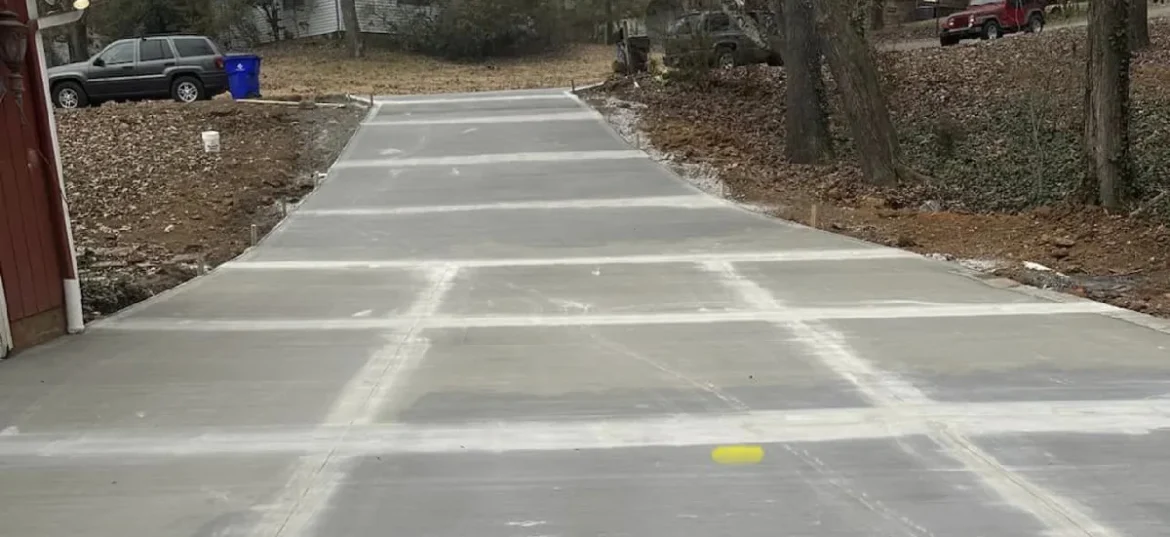
Concrete Guys Knox: Your Go-To Experts
Knowing When to Call
Understanding the right time to call in professional help for your concrete issues is crucial in preserving its longevity and aesthetics. It’s not just about the visible cracks or wear; sometimes, the signs are subtler. If you notice uneven settling, extensive water pooling, or if the surface starts to crumble or flake, these are clear indicators that professional intervention is needed. Concrete Guys Knox specializes in diagnosing and resolving these issues, ensuring that minor problems don’t escalate into major ones. Their expertise can be invaluable in situations where the right course of action isn’t immediately clear, providing peace of mind and preventing further damage.
Choosing the Right Service
When it comes to concrete services, not all providers are created equal. The key to finding a reliable service lies in thorough research. Start by seeking recommendations from friends or family who have had similar work done. Online reviews and testimonials can also provide insight into a company’s reputation and quality of work. When considering a service like Concrete Guys Knox, look for their portfolio of past projects, their approach to customer service, and their willingness to provide detailed, transparent quotes. A dependable service provider will be happy to discuss your needs, offer expert advice, and provide a clear plan of action.
Conclusion
Maintaining your concrete in Knoxville doesn’t have to be an overwhelming task. With the right knowledge and a proactive approach, you can keep your concrete in top condition. Regular maintenance, such as cleaning and sealing, plays a significant role in extending the life of your concrete. However, when faced with more complex issues, don’t hesitate to reach out to professionals like Concrete Guys Knox. Their expertise can be the difference between a quick fix and a costly replacement.
Remember, it is an integral part of your property. It’s not just a functional surface; it’s an aesthetic feature and a financial investment. By taking care of it, you’re not only enhancing the curb appeal of your property but also contributing to its overall value. Concrete Guys Knox is here to assist you every step of the way, ensuring that your concrete remains a durable, attractive, and safe part of your home or business. Trust in their expertise to guide you in making informed decisions about your concrete care, and rest assured that your investment is in good hands.
